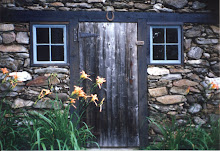Bo Diddley
Here we have one of the biggest day's of the year (for some) — quite American, quite over the top — so we may as well have the soundtrack of a super American for the day. Like the Sleepy LaBeef song from the day before "Boogie at the Wayside Lounge", it's all poetry with Bo Diddley.
The Story of Bo Diddley
______________________
______________________
I was born one night about twelve o'clock
(Ha-ha-ha)
I come in this world playin' a gold guitar
My father was around stickin' out his chest
(Hee-hee)
A-now, mama this boy he gon fee' you a mess
(Ha-ha-ha-ha-ha)
Yeah! Yea-ha, Ooh, uh-huh
Now, people came from miles around
Yeah, just to hear my little guitar sound
Now, some of 'em said I had what it takes
If I keep on practice I'd be famous one day
(Ha-ha)
Woo, I'm a mess!
I'm a killer-diller
Uh-huh, yea-hey, a-uh, uh-huh
Early in the middle of the night
A car drove up with four headlights
(Ha-ha-ha-ha-ha)
Now, a man stepped out wit' a long cigar
He said, 'Sign this line and I can make you a star'
(Ha-ha-ha-ha-ha)
I said, 'Now, what's in it man, what's in it for me?'
He says, 'I'd, play yo' guitar son and wait an see'
Here I am! (heh-heh-heh, heeee)
The girls liked me, they say, 'It's crazy, it sound nice
Uuh-uuh
My first engagement was in Chicago
I'm playin' with my band and they're playin' tonight
I played fo' some people I'd never seen before
I'm playin for the fans, what the fans all like
It was good too (ha-ha-ha-ha)
Who wants our band
But like the parents can't handle it
They like it
What the fans, what the fans all like
Sound nice
If my fans can't handle it
(Ha-ha-ha-ha-ha-ha)
Now, we're playin' and we're singin' our song
Yeah, ah-ha-ha-ha
Ev'rything is goin' our way
What the fans, what the fans all like
Yeah, man
What the fans, what the fans all like FADES-
I'm killer-diller
What the fans, what the fans all like
I'm 'on killa diller.











































